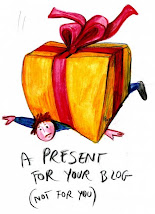Stunning crop art has sprung up across rice fields in Japan. But this is no alien creation - the designs have been cleverly planted.

Farmers creating the huge displays use no ink or dye. Instead, different colours of rice plants have been precisely and strategically arranged and grown in the paddy fields.
 As summer progresses and the plants shoot up, the detailed artwork begins to emerge.
As summer progresses and the plants shoot up, the detailed artwork begins to emerge.





Closer to the image, the careful placement of thousands of rice plants in the paddy fields can be seen.


Farmers creating the huge displays use no ink or dye. Instead, different colours of rice plants have been precisely and strategically arranged and grown in the paddy fields.
 As summer progresses and the plants shoot up, the detailed artwork begins to emerge.
As summer progresses and the plants shoot up, the detailed artwork begins to emerge.



Smaller works of crop art can be seen in other rice-farming areas of Japan. The farmers create the murals by planting little purple and yellow-leafed kodaimai rice along with their local green-leafed tsugaru roman variety to create the coloured patterns between planting and harvesting in September.
The murals in Inakadate cover 15,000 square metres of paddy fields.
From ground level, the designs are invisible, and viewers have to climb the mock castle tower of the village office to get a glimpse of the work.
Rice-paddy art was started there in 1993 as a local revitalization project, an idea that grew out of meetings of the village committee.
The murals in Inakadate cover 15,000 square metres of paddy fields.
From ground level, the designs are invisible, and viewers have to climb the mock castle tower of the village office to get a glimpse of the work.
Rice-paddy art was started there in 1993 as a local revitalization project, an idea that grew out of meetings of the village committee.

Closer to the image, the careful placement of thousands of rice plants in the paddy fields can be seen.

The different varieties of rice plant grow alongside each other to create the masterpieces.
In the first nine years, the village office workers and local farmers grew a simple design of Mount Iwaki every year. But their ideas grew more complicated and attracted more attention.
In 2005 agreements between landowners allowed the creation of enormous rice paddy art.
A year later, organizers used computers to precisely plot planting of the four differently colored rice varieties that bring the images to life. The largest and finest work is grown in the Aomori village of Inakadate, 600 miles north of Tokyo, where the tradition began in 1993.
The village has now earned a reputation for its agricultural artistry and this year the enormous pictures of Napoleon and a Sengoku-period warrior, both on horsebacks, are visible in a pair of fields adjacent to the town hall. Napoleon on horseback can be seen from the skies, created by precision planting and months of planning between villagers and farmers in Inkadate.

A Sengoku warrior on horseback has been created from hundreds of thousands of rice plants; the color's created by using different varieties, in Inakadate in Japan.

More than 150,000 visitors come to Inakadate, where just 8,700 people live, every summer to see the extraordinary murals. Each year hundreds of volunteers and villagers plant four different varieties of rice in late May across huge swathes of paddy fields. Another famous rice paddy art venue is in the town of Yonezawa in the Yamagata prefecture. This year's design shows the fictional 16th-century samurai warrior Naoe Kanetsugu and his wife, Osen, whose lives feature in television series Tenchijin. Fictional warrior Naoe Kanetsugu and his wife Osen appear in fields in the town of Yonezawa, Japan.

And over the past few years, other villages have joined in with the plant designs. Various artwork has popped up in other rice-farming areas of Japan this year, including designs of deer dancers.

In the first nine years, the village office workers and local farmers grew a simple design of Mount Iwaki every year. But their ideas grew more complicated and attracted more attention.
In 2005 agreements between landowners allowed the creation of enormous rice paddy art.
A year later, organizers used computers to precisely plot planting of the four differently colored rice varieties that bring the images to life. The largest and finest work is grown in the Aomori village of Inakadate, 600 miles north of Tokyo, where the tradition began in 1993.
The village has now earned a reputation for its agricultural artistry and this year the enormous pictures of Napoleon and a Sengoku-period warrior, both on horsebacks, are visible in a pair of fields adjacent to the town hall. Napoleon on horseback can be seen from the skies, created by precision planting and months of planning between villagers and farmers in Inkadate.

A Sengoku warrior on horseback has been created from hundreds of thousands of rice plants; the color's created by using different varieties, in Inakadate in Japan.

More than 150,000 visitors come to Inakadate, where just 8,700 people live, every summer to see the extraordinary murals. Each year hundreds of volunteers and villagers plant four different varieties of rice in late May across huge swathes of paddy fields. Another famous rice paddy art venue is in the town of Yonezawa in the Yamagata prefecture. This year's design shows the fictional 16th-century samurai warrior Naoe Kanetsugu and his wife, Osen, whose lives feature in television series Tenchijin. Fictional warrior Naoe Kanetsugu and his wife Osen appear in fields in the town of Yonezawa, Japan.

And over the past few years, other villages have joined in with the plant designs. Various artwork has popped up in other rice-farming areas of Japan this year, including designs of deer dancers.







17 comments:
There is so much life in it.It also reflects the national character and commitment.
awesome yar babli...really good..and thanks yar for the wishes..greeting to u and fmly too..:)
wow wow wow..what a fantastic art..there are so many interesting and stunning regional visual magics across the world..we don't know about them..
These are amazing and beautiful.
Amazing creations.
Happy Holy to you.
Absolutely amazing!
wow thats truly amazing!!
Hi Babli! March has arrived and maybe this awful winter of ours will be gone...
Happy Holi. Great Festival of Colours!!
Wonderful! I'm speechless... Never heard of this beauty!!
Meanwhile, Blogtrotter 2 is still in Haiti, now at Malfini Beach. Hope you enjoy and have a great week!!
Happy holi to u too babli..cheers:)
interesting!
Wow, never seen anything like that! Amazing.
Very Interesting! I could see the hard work behind those art. I wish this idea could be copied as an awareness to people to get more interest in agriculture.
This is so clever, amazing and very beautiful.Thanks for sharing this art with us.
बेमिसाल!
बहुत बढ़िया!
होली की बधाई स्वीकार करें!
its awesome collection....so nice of u to share it....
wow !!!
WOW...superb pics
amazing...thanks for sharing
Post a Comment